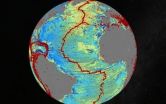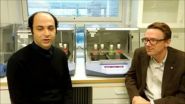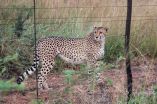(Press-News.org) National Institutes of Health, University of Maryland School of Medicine, Canadian Institutes of Health Research New research by scientists at the University of Maryland School of Medicine (UM SOM) and the Ottawa Heart Institute has uncovered a new pathway by which the brain uses an unusual steroid to control blood pressure. The study, which also suggests new approaches for treating high blood pressure and heart failure, appears today in the journal Public Library of Science (PLOS) One.
"This research gives us an entirely new way of understanding how the brain and the cardiovascular system work together," said Dr. John Hamlyn, professor of physiology at the University of Maryland School of Medicine, one of the principal authors. "It opens a new and exciting way for us to work on innovative treatment approaches that could one day help patients."
For decades, researchers have known that the brain controls the diameter of the peripheral arteries via the nervous system. Electrical impulses from the brain travel to the arteries via a network of nerves known as the sympathetic nervous system. This system is essential for daily life, but is often chronically overactive in high blood pressure and heart failure. In fact, many drugs that help with hypertension and heart failure work by decreasing both acute and chronic activity in the sympathetic nervous system. However, these drugs often have serious side effects, such as fatigue, dizziness and erectile dysfunction. "These drawbacks have led to the search for novel ways to inhibit the sympathetic nervous system while causing fewer problems for hypertension and heart failure patients," says Dr. Frans Leenen, director of hypertension at the Ottawa Heart Institute, and a principal author of the study.
Working with an animal model of hypertension, Dr. Hamlyn and Dr. Mordecai Blaustein, professor of physiology and medicine at the UM SOM, and their research partner, Dr. Leenen, found a new link between the brain and increased blood pressure, namely, a little-known steroid called ouabain (pronounced WAH-bane). Ouabain was discovered in human blood more than 20 years ago by Dr. Hamlyn and Dr. Blaustein, along with scientists at the Upjohn Company. The new study is the first to identify the particular pathway that connects the brain to ouabain's effects on proteins that regulate arterial calcium and contraction. Through this mechanism, ouabain makes arteries more sensitive to sympathetic stimulation, and as a result the enhanced artery constriction promotes chronic hypertension.
"Now that we understand the role of ouabain, we can begin working on how to modify this new pathway to help people with cardiovascular problems," said Dr. Blaustein. "The potential for this is big." Dr. Blaustein, who has been doing research on the substance since 1977, said medications that block ouabain's effects might improve the lives of people with hypertension and heart failure.
The researchers, who include Vera Golovina, Ph.D., an adjunct associate professor of physiology at UM SOM, and Bing Huang, M.D, Ph.D., a research associate at the Ottawa Heart Institute, also found significant new evidence that ouabain is manufactured by mammals, a question that had not been previously answered.
"This discovery underscores the crucial importance of basic research here at the School of Medicine," said Dean E. Albert Reece, MD, PhD, MBA, as well as vice president of medical affairs, the University of Maryland and the John Z. and Akiko Bowers Distinguished Professor. "These scientists have spent years unraveling the many potential roles of ouabain and how it works, and now we are beginning to see the fruits of their labor."
INFORMATION:
The research was funded by the National Institutes of Health, the Canadian Institutes of Health Research, and the University of Maryland School of Medicine.
About the University of Maryland School of Medicine
The University of Maryland School of Medicine was chartered in 1807 and is the first public medical school in the United States and continues today as an innovative leader in accelerating innovation and discovery in medicine. The School of Medicine is the founding school of the University of Maryland and is an integral part of the 11-campus University System of Maryland. Located on the University of Maryland's Baltimore campus, the School of Medicine works closely with the University of Maryland Medical Center and Medical System to provide a research-intensive, academic and clinically based education. With 43 academic departments, centers and institutes and a faculty of more than 3,000 physicians and research scientists plus more than $400 million in extramural funding, the School is regarded as one of the leading biomedical research institutions in the U.S. with top-tier faculty and programs in cancer, brain science, surgery and transplantation, trauma and emergency medicine, vaccine development and human genomics, among other centers of excellence. The School is not only concerned with the health of the citizens of Maryland and the nation, but also has a global presence, with research and treatment facilities in more than 30 countries around the world. http://medschool.umaryland.edu/
Researchers at The University of Texas MD Anderson Cancer Center have identified a biomarker living next door to the KLK3 gene that can predict which GS7 prostate cancer patients will have a more aggressive form of cancer.
The results reported in the journal of Clinical Cancer Research, a publication of the American Association of Cancer Research, indicate the KLK3 gene – a gene on chromosome 19 responsible for encoding the prostate-specific antigen (PSA) – is not only associated with prostate cancer aggression, but a single nucleotide polymorphism (SNP) on it is more ...
Scientists have created a new map of the world's seafloor, offering a more vivid picture of the structures that make up the deepest, least-explored parts of the ocean.
The feat was accomplished by accessing two untapped streams of satellite data.
Thousands of previously uncharted mountains rising from the seafloor, called seamounts, have emerged through the map, along with new clues about the formation of the continents.
Combined with existing data and improved remote sensing instruments, the map, described today in the journal Science, gives scientists new tools ...
Zoonosis—transmission of infections from other vertebrates to humans—causes regular and sometimes serious disease outbreaks. Bats are a well-known vertebrate reservoir of viruses like rabies and Ebola. Recent discovery of sequences in bats that are resemble influenza virus genes raised the question of whether bat flu viruses exist and could pose a threat to humans. A study published on October 2nd in PLOS Pathogens addresses this question based on detailed molecular and virological characterization.
Because no infectious virus particles were isolated from the bat samples ...
Scientists at the University of California, Santa Cruz, using a new wildlife tracking collar they developed, were able to continuously monitor the movements of mountain lions in the wild and determine how much energy the big cats use to stalk, pounce, and overpower their prey.
The research team's findings, published October 3 in Science, help explain why most cats use a "stalk and pounce" hunting strategy. The new "SMART" wildlife collar--equipped with GPS, accelerometers, and other high-tech features--tells researchers not just where an animal is but what it is doing ...
VIDEO:
This is a video interview with Jens Nielsen.
With a simple mutation, yeast can grow in higher than normal temperatures. Researchers at Chalmers University of Technology demonstrate this in an article...
Click here for more information.
With a simple mutation, yeast can grow in higher than normal temperatures. Researchers at Chalmers University of Technology demonstrate this in an article to be published in the scientific journal Science. The findings may result in ethanol ...
Wild cheetah populations have declined precipitously in the past century: from an estimated 100,000 in 1900 to only around 10,000 today. A new study from researchers in Europe, South Africa and at North Carolina State University suggests that the energy cheetahs spend looking for prey, rather than their high-speed hunting tactics or food stolen by other predators, may be to blame for their dwindling numbers.
Cheetahs are high-speed hunters, but are not the strongest predators in their ecosystems. Often, hyenas and lions will take advantage of this, stealing the cheetah's ...
VIDEO:
Princeton University researchers first deposited iron atoms onto a lead surface to create an atomically thin wire. They then used a scanning-tunneling microscope to create a magnetic field and to...
Click here for more information.
Princeton University scientists have observed an exotic particle that behaves simultaneously like matter and antimatter, a feat of math and engineering that could yield powerful computers based on quantum mechanics.
Using a two-story-tall microscope ...
The HIV pandemic with us today is almost certain to have begun its global spread from Kinshasa, the capital of the Democratic Republic of the Congo (DRC), according to a new study.
An international team, led by Oxford University and University of Leuven scientists, has reconstructed the genetic history of the HIV-1 group M pandemic, the event that saw HIV spread across the African continent and around the world, and concluded that it originated in Kinshasa. The team's analysis suggests that the common ancestor of group M is highly likely to have emerged in Kinshasa around ...
Accessing two previously untapped streams of satellite data, scientists at Scripps Institution of Oceanography at UC San Diego and their colleagues have created a new map of the world's seafloor, creating a much more vivid picture of the structures that make up the deepest, least-explored parts of the ocean. Thousands of previously uncharted mountains rising from the seafloor and new clues about the formation of the continents have emerged through the new map, which is twice as accurate as the previous version produced nearly 20 years ago.
Developed using a scientific ...
A new study led by Queen's University Belfast into how cheetahs burn energy suggests that human activity, rather than larger predators, may force them to expend more energy and thus be the major cause of their decline.
Wild cheetahs are down to under 10,000 from 100,000 a century ago with conventional wisdom blaming bigger predators for monopolising available food as their habitat becomes restricted. The traditional thinking has been that cheetahs no longer have sufficient access to prey to fuel their enormous energy output when engaging in super-fast chases.
But, ...





